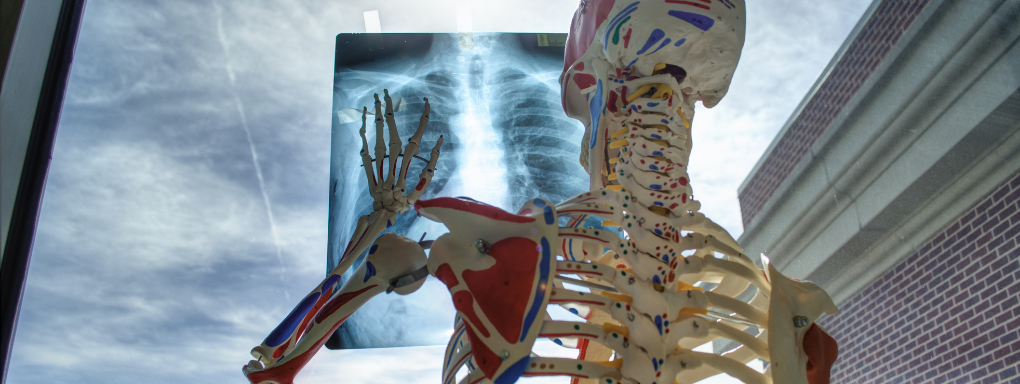The digital transformation in health care is happening at a rapid pace. New technology, like artificial intelligence, smart or Internet of Things devices, and robotics are changing how medical care is delivered. Ongoing global crises have only accelerated this transformation.
These trends are likely to be the most relevant to health care as the digital transformation of the industry continues over the next few years.
Artificial Intelligence and IoT in the Hospital
New AI algorithms prove to be highly effective at extracting useful information from visual health care data like CT scans.
One recent study from Google found that an artificial intelligence algorithm developed in-house was faster and more accurate than professional radiologists in detecting evidence of cancer in mammograms. In the U.K., the algorithm reduced the rate of false negatives by 1.2% compared to the standard method for detecting breast cancer.
During the pandemic, radiologists also used similar tech to search CT scans for “ground-glass opacities,” translucent patches suggestive of COVID-19 infection, in the lungs of hospital patients.
These tools can significantly streamline the process of looking for evidence of illness in medical imaging — an often tedious process that has traditionally been difficult to automate.
AI is unlikely to replace radiologists and similar professionals altogether. Instead, new algorithms will probably become a useful tool for hospitalists and medical researchers, allowing them to find evidence of disease much sooner than they would be able to otherwise.
The change is likely to cause significant disruptions to business as usual for the medical industry, however. In the United States, Medicare currently will only pay for two use-cases of medical AI. It may be some time before health care administration catches up to the change.
The Smart Hospital
New networked sensors — often in the form of smart or Internet of Things monitors — provide hospitals with better data on their patients. Information is available no matter where an employee is in the building. They can check in a patient’s vitals as long as they have access to a workstation or internet-connected device.
The technology can also alert doctors when a patient’s vitals move out of a safe range, enabling the fastest possible response.
Like smart health wearables, other devices can provide similar services after a patient is discharged, allowing doctors to track recovery without the need for in-person check-ins.
Digital Doctoring: Telemedicine and Telesurgery
One of the most significant health care changes due to COVID-19 was the pivot to remote medicine or telemedicine. This technology enables doctors to connect remotely with patients.
One industry professional described it as “10 years of change in one week.” Now, more than a year after the World Health Organization first declared the pandemic, and it seems like telemedicine is likely to stay.
Simpler applications of telemedical tech typically involve patients consulting remotely with medical professionals over web conferencing software. Others may involve digital health wearables or other devices that can gather and report data on patient health to doctors remotely.
This technology can make medical services much more accessible, especially for individuals who live in rural areas, lack reliable transportation or are disabled. With telemedicine, patients can connect with physicians from the comfort of their homes, potentially reducing some of the anxiety associated with a consultation or doctor’s visit.
The ongoing deployment of 5G in the U.K. and worldwide will also likely make telemedicine more accessible and effective. Improving the reliability and quality of cellular networks can provide patients with another internet connection option that allows them to communicate easily with their GP or another medical services provider.
Telesurgery: Remote Surgery With Medical Robotics
A more cutting-edge application of internet technology is telesurgery. This enables surgeons to operate on people who may be hundreds of miles away. Robots controlled by surgeons in remote operating rooms can work directly on patients.
Surgeons either control the robot directly or use an operating console that tracks their hand movements. These motions, sometimes adjusted through smoothing AI algorithms, are sent to a surgical robot that mimics them, performing the actual operation. Near-real-time streaming video from the operation room and data from patient monitors provide the surgeon with the information they need to complete the procedure safely.
Telesurgery remains highly experimental but is being used more often. Several robots for remote cranial surgery are on the market or currently in the works.
As with telemedicine, 5G will likely help to make telesurgery more practical. The high speeds offered by the new networks will reduce the risk of latency during surgery, eliminating the potential for delay in a surgeon’s movements or visual information from in-operating room cameras.
New Technology May Revolutionise Medicine
Artificial intelligence, the Internet of Things and new infrastructure will have a major impact on the health care industry. These technologies will streamline various medical tasks and improve existing services — expanding access and making medical tests more accurate.
While many health care applications of AI, robotics and IoT technology are still experimental, their impacts will likely be seen within the next few years.




